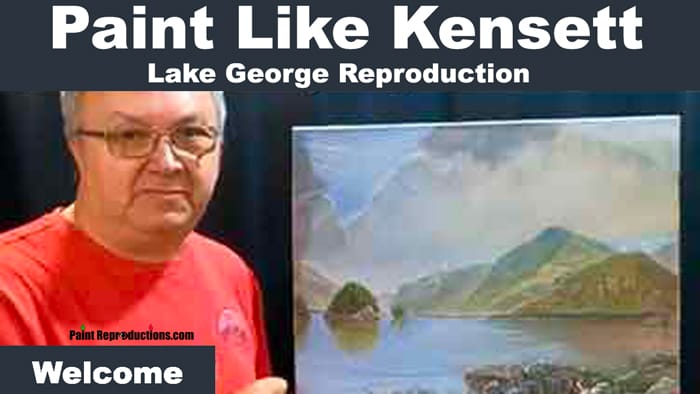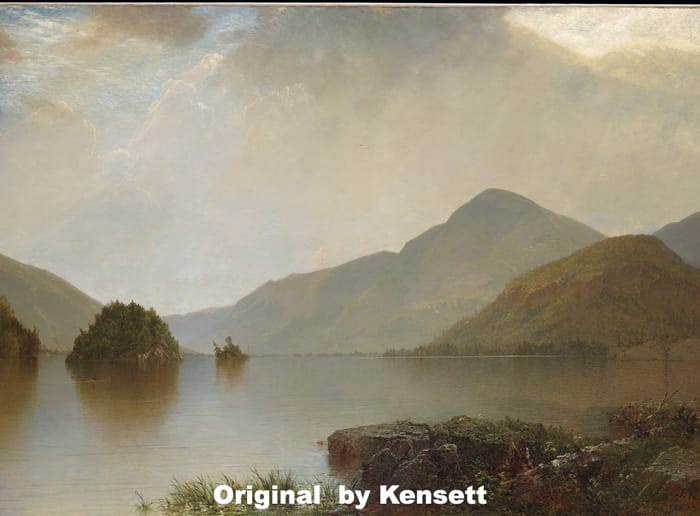
Lake George
Course Title: Paint Like Kensett: Lake George Reproduction
Join us at Paint Reproductions as we recreate the John Frederick Kensett masterpiece “Lake George.” Our videos will provide a step-by-step guide as we use both traditional and modern techniques to create this stunning painting.
First, we will start with a quick landscape sketch, using burnt umber as the underpainting. This step is crucial, as it allows us to establish the composition and overall tone of the painting.
Once the underpainting is complete, we will move on to blocking in colors. This is where we will begin to see the painting come to life, as we add layers of color to create depth and dimension.
We will use glazing and scumbling techniques to achieve the atmospheric effects that Kensett is famous for. Glazing involves applying thin layers of paint over one another, which creates a luminous effect. Scumbling, however, consists in applying a thin layer of paint and then gently lifting it off the canvas, creating a soft, dreamy effect.
Throughout the process, we will provide helpful tips and tricks to make painting easier and more enjoyable. By the end of the video series, you will have a beautiful, finished artwork you can be proud of!
Skill Level: Intermediate
Recommended Prerequisites:
Creating working Images in Photoshop
How To Paint With A Limited Palette Like A Pro
Get Accurate Colors With The Color Checker!.
Build a Color Checker for under $10.00.
Original Lake George

Lake George
Artist Name:
John Frederick Kensett
Dated: 1869
Medium: Oil on Canvas
Dimensions: 112.1 cm × 168.6 cm
Location: Metropolitan Museum of Art
Recommended Prerequisites:
Creating working Images in Photoshop
How To Paint With A Limited Palette Like A Pro
Get Accurate Colors With The Color Checker!.
Build a Color Checker for under $10.00.
Material List
Materials List for Oil Painting Reproduction:
The canvas has been coated with gesso, rotated horizontally and vertically, and sanded smoothly between each coat. As a result, I painted the canvas about 5 times to create a smooth working surface to support detailing and glazing techniques.
Clickable links will take you to Amazon, where they were purchased for reproduction.
Tools:
- Proportional Divider
- Color Checker
- Glass Palette
- Palette Knife
- Ruler
- Red or Black Pastel pencil for gridlines
Canvas For Reproduction:
24″ W X 18″ H prepared canvas
Oil Paints:
All reproductions use a minimal pallet of six colors:
Glazing Mixture:
- Pure Refined Linseed Oil for mixing and thinning
- Windsor Newton Glazing and Blending Medium for glazing and thinning for details
Sketching With Paint:
Gamblin Gamsol is a solvent artists use to clean their brushes and thin down brown paint for the initial sketch on canvas. Remember not to use Gamsol or any other cleaning solvent for anything other than sketching. For example, George Werbacher uses brown paint thinned with Gamsol when needed for the initial oil painting sketch. In addition, George uses linseed oil only when prepping oil paints for use in all his reproductions and originals.
Leave a Reply